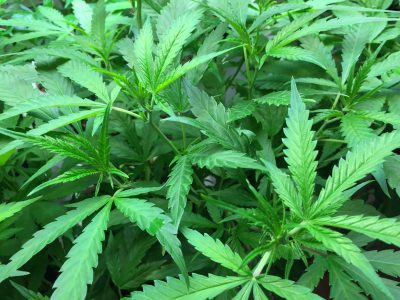What Do You Need to Know About Cannabicyclol – CBL?
If you are familiar with Cannabis, then you must know that Cannabicyclol – CBL is a non-psychoactive cannabinoid present in Cannabis. Just like cannabinol, CBL is also a degradative product. It converts from cannabichromene into CBL through the light.
Properties and Structure of CBL Molecule
The molecular formula of CBL is similar to various another cannabinoid. This may include CBC, CBD, THC, and CBG. All of these molecules slight differ in their atomic arrangement. This is exactly what makes them different, providing highly different effects.
What Makes CBL To Differ From THC?

cannabis with CBL
CBL is not identical to THC because it does not contain any double bond in its molecular structure. The double bond position in different isomers of THC reflects the psychoactive quality and intensity of isomer.
Since CBL lacks the double bond completely, it does not have any psychoactive potential. Indeed, if CBL has an affinity to other cannabinoid receptors or not, it is yet to be determined.
CBL being a degradative product is present in Cannabis plant. It is formed when it is exposed to light. It converts from cannabichromene – CBC. This substance was initially identified by Sieper and Korte back in 1964. These two scientists successfully isolated the CBL from the famous cannabis plant by using a method known as TLC – thin-layer chromatography.
What Studies Have To Say About Cannabicyclol?
Well, until now we don’t have any evidence or reported pharmacological uses of Cannabicyclol. But how this compound occurs in our human body is definitely worth knowing.
CBL is not psychomimetic thus it does not result in hallucinations. It does not induce any kind of euphoric sensations which are usually triggered by other psychoactive cannabinoid or THC.
CBL Presence in Cannabis Plant
Occurring as the degradative product of CBC – cannabichromene, CBL is largely found in the Pakistani hashish samples that can be stored from six to up to four years. Any sample that contains CBL also has CBC is much higher concentration. But if you compare the concentration of CBC with other major constituents like CBD, THC, and CBN, it is comparatively quite low.
Do you know that CBL was also found in the ancient cannabis sample discovered in a Chinese tomb, dated to around 2700 BCE?
CBL and Medical Potential
In terms of medical potential, very little is yet known about CBL. Even though it has always been investigated with another cannabinoid, to ascertain its medical potential to prevent prostaglandins production (hormones which control muscle contractions), CBL showed lowest biological activity in comparison to other tested compounds.
Speaking of which, a study was conducted and published in 1976 that showed that CBL administration caused no significant effects at around 1mg/8kg. However, it caused convulsions and even death when administered at around 8mg/1kg.
In this study, CBL was administered to two healthy rabbits but the effects were only observed in one rabbit. This means that we still hold only limited information about the actual effects of CBL on the human body.
While it is a major component of the cannabis plant, it potential medical effects is yet to be ascertained!






